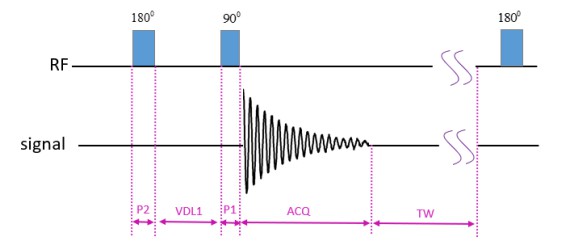Introduction
The process of the sample from the excited state to the equilibrium state is called the longitudinal relaxation of the sample, also called spin-lattice relaxation, and the relaxation speed is characterized by the longitudinal relaxation time T1. This chapter describes how to use the Inversion Recovery (IR) sequence to measure the longitudinal relaxation time of a sample. First, the pulse parameters of the IR sequence are introduced; secondly,the experiment of how to perform the T1 measurement is discussed.
Pulse sequence parameter
The IR sequence consists of two parts: the inversion pulse (180° pulse) and the readout pulse (90° pulse).
The specific IR sequence pulse timing is shown in Figure1.
Fig1 IR sequence
RFD: The sampling time of the first sampling point is controlled by the delay time of the 90° pulse, in ms;
Time interval between VDL 1:180° pulse and 90° pulse;
P1: hard pulse 90° pulse width, unit us;
P2: hard pulse 180° pulse width, unit us;
TW: repeat sampling waiting time, that is, the time between the end of the previous sampling and the start of the
next sampling, in ms;
ACQ: The total time of signal acquisition, in ms
 NIUMAG
NIUMAG
